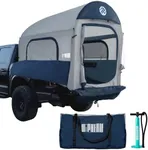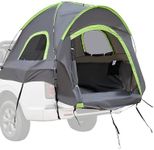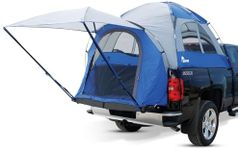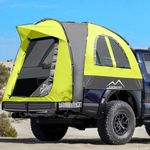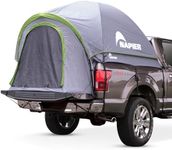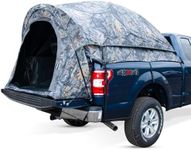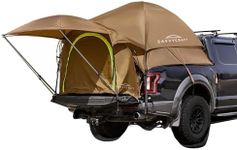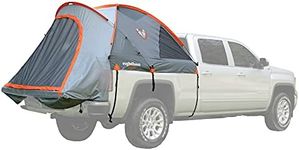Buying Guide for the Best Truck Bed Tents
Choosing a truck-bed tent is a great way to turn your pickup into a comfortable camping spot. The right tent can make your outdoor adventures more enjoyable by providing shelter, convenience, and a cozy place to sleep. When picking a truck-bed tent, it's important to consider how you'll use it, the size of your truck, and the features that matter most to you. Understanding the key specifications will help you find a tent that fits your needs and makes your camping experience smooth and enjoyable.Truck Bed Size CompatibilityTruck-bed tents are designed to fit specific truck bed sizes, such as short, standard, or long beds. This specification is crucial because a tent that doesn't match your truck's bed size won't fit properly, leading to discomfort or even damage. To navigate this, measure your truck bed's length and width, and compare it to the tent's compatibility chart. If you have a compact truck, look for tents made for smaller beds; for full-size trucks, choose accordingly. Always pick a tent that matches your truck's exact bed size for a secure and comfortable fit.
Tent Material and Weather ResistanceThe material of the tent determines how well it can handle different weather conditions. Most truck-bed tents are made from polyester or canvas, with varying degrees of waterproofing and ventilation. If you plan to camp in rainy or windy conditions, look for tents with high waterproof ratings and sturdy construction. For fair-weather camping, lighter materials with good airflow may be sufficient. Your typical camping environment should guide your choice—choose more robust, weather-resistant materials for unpredictable climates, and lighter, breathable fabrics for mild weather.
Setup and InstallationHow easy it is to set up the tent can make a big difference, especially after a long day of travel. Some tents use color-coded poles and simple attachment systems, while others may require more time and effort. If you value convenience or often camp alone, look for tents advertised as quick or easy to set up. If you don't mind spending extra time or have help, more complex tents may offer additional features. Think about how often you'll use the tent and whether you'll usually have assistance when deciding on the setup complexity.
Interior Space and HeadroomThe amount of space inside the tent affects comfort, especially if you plan to sleep with a partner or store gear inside. Tents vary in floor area and peak height, which determines how much you can move around or sit up inside. If you need more room for sleeping or gear, look for tents with larger floor dimensions and higher ceilings. For solo campers or those with minimal gear, a compact tent may suffice. Consider how many people and how much equipment you'll have inside to choose the right size.
Ventilation and WindowsGood ventilation is important to prevent condensation and keep the tent comfortable. Tents offer different numbers and sizes of windows, mesh panels, and vents. If you camp in warm or humid areas, prioritize tents with multiple windows and mesh for airflow. In cooler climates, fewer openings may help retain warmth. Think about the typical weather where you'll camp and your comfort preferences when evaluating ventilation features.
Access and Entry PointsThe design of the tent's doors and access points affects how easy it is to get in and out, especially at night or in bad weather. Some tents have large, D-shaped doors or multiple entry points, while others have smaller or single doors. If you value easy access or camp with others, look for tents with larger or multiple doors. For solo campers, a single entry may be sufficient. Consider your usual camping setup and how often you'll need to enter or exit the tent.
